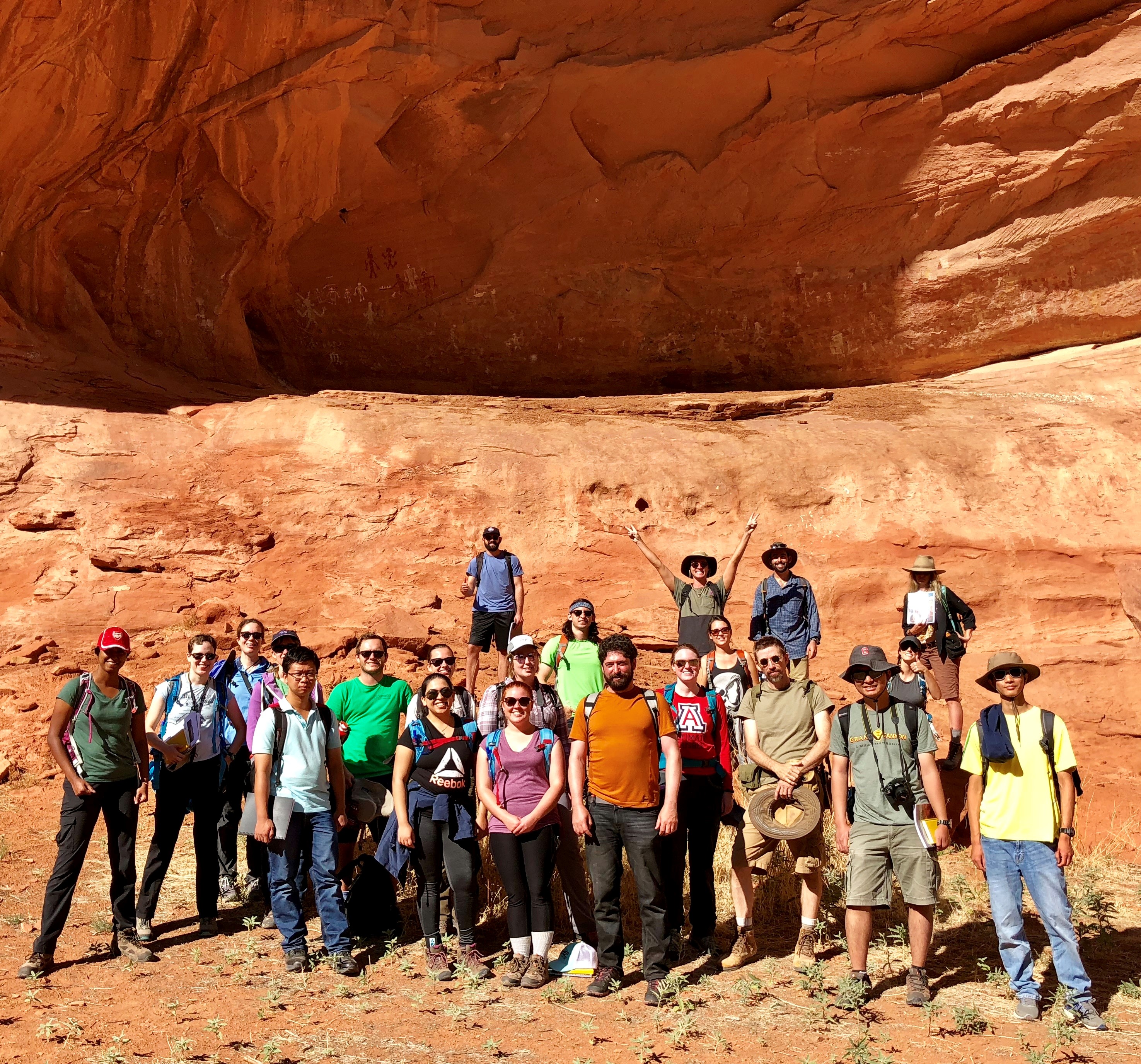LPL Fieldtrip (594A) Fall 2018

This semester, the LPL Graduate Students, led by Christopher Hamilton and Joseph Spitale, travelled to the Petrified Forest National Park and Canyon de Chelly National Monument. The focus of the field trip was to explore the geological record of northeastern Arizona to better understand processes and paleo-environments that existed during the time of Pangea; and to develop a deeper sense of place by understanding the cultural significance of geological landmarks within the Navajo Nation.
The assembly of the supercontinent Pangea began approximately 335 million years ago as earlier-formed continental units came together. Then, about 160 million years later, Pangea started to break apart. This time period spanned the Paleozoic and early Mesozoic eras and included the Permian–Triassic extinction event. This mass extinction occurred about 252 million years ago and eliminated over 95% of marine and 70% of terrestrial species—making it the most devastating of the five ancient mass extinction events that occurred on Earth.

On the first day of the field trip, the group visited the Petrified Forest, which is known for its fossils and particularly for its well-preserved fossilized trees. These trees grew about 225 million years ago; and at the time, the Appalachian Mountains formed a southwest–northeast trending mountain range that spanned the middle of Pangea. When tall trees—including conifers, tree ferns, and gingkoes—fell into the rivers that flowed off of these mountains, some of the logs were rafted toward a deltaic region and buried beneath sand. Over time, the wood within these logs was then replaced by silica and become jasper logs, which are now being exposed within layers of the Chinle Formation. In the National Park, Archaeologist Amy Schott helped to provide students with the opportunity to both examine the exceptional fossilized trees from the Triassic Period and better understand the cultural significance of the region for Navajo, Hopi and Zuni people, as well as for Pueblo settlers and even older nomadic communities.
On the second day, the LPL group visited to Canyon de Chelly, where Park Guide Delta Higdon introduced students to the geological and cultural history of the region. The LPL group was fortunate to be able to walk into the canyon, descending past a major erosional unconformity at the base of the Late Triassic Shinarump Conglomerate (Lowermost Member of the Chinle Formation) and through cross-bedded layers of the Permian De Chelly Sandstone. The de Chelly Sandstone was deposited 230 to 205 million years ago, when northeastern Arizona was part of a vast desert located north of the equator and much like today’s Sahara Desert. The sandstone is well exposed through much of the Southwest, but its type locality is Canyon de Chelly, where it is spectacularly exposed in the canyon walls and as a sandstone spire, called Spider Rock, which raises 229 m (approximately 750 feet) above the canyon floor. In the canyon, students saw ancient dwellings of the Navajo people and petroglyphs etched into the walls of the Navajo and Ancestral Puebloans. On the third day of the field trip, the group revisited Petrified Forest National Park and first explored the northern part of the park, which provides sweeping view into the Painted Desert. The group then ventured along the Blue Mesa trail, which winds its way through colorful exposures within the Blue Mesa Member of the Chinle Formation. This geological member underlies younger sandstone unit that contain petrified logs, and as the overlying units are eroded, some of the fossilized wood is transported down into the gullies. Some of the larger petrified logs locally form erosion resistant caprocks that lead to the development of wild erosional landforms as the surrounding material is stripped away.
After three intense days, the LPL group returned to Tucson and is now looking forward to next semester’s field trip to White Sands National Monument.


